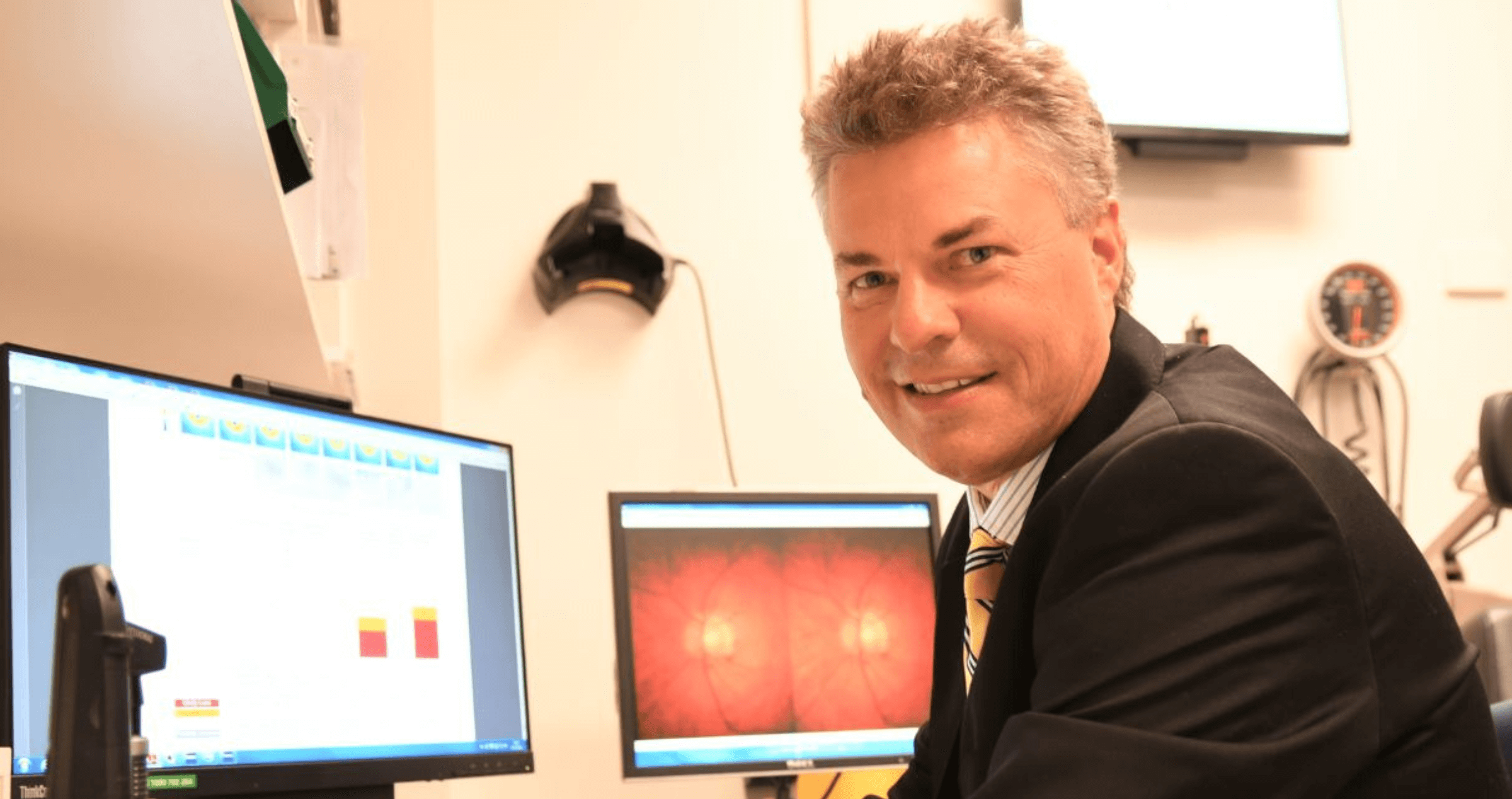Share
Selective laser trabeculoplasty (SLT) has been proven to slow the progression of existing glaucoma disease by lowering pressure inside the eye.

Now, in a world first, ophthalmology experts at Flinders University will determine the effectiveness and suitability of using SLT as an early intervention to prevent the onset of visual loss from glaucoma.
Glaucoma is a disease linked to increased pressure inside the eye, which can cause irreversible damage to the optic nerve and loss of vision. Asymptomatic in the early stages, it is the leading cause of irreversible blindness worldwide.
Chief investigator Professor Jamie Craig, Matthew Flinders Distinguished Professor at the College of Medicine and Public Health, has been awarded over AU$1.7 million to fund the trial.
“We have developed a tool that can identify individuals who are deemed at high risk of losing their vision from glaucoma, however there is still a major gap between identifying them and how they may be safely treated. Early detection and treatment of those most at risk of vision loss is fundamental to reducing the disease burden for patients and the health care system,” said Professor Craig.
“This clinical trial will generate high-quality evidence to determine the effectiveness of a more timely delivery of laser for high-risk individuals. If effective, this will reduce visual issues and blindness from glaucoma, which will improve their quality of life, allow them to continue working and driving, reduce their risk of falls and lead to cost savings for the health system,” added Professor Craig.
RCT of Genetically at Risk
The $1.7 million research project will use a randomised controlled trial (RCT) of 500 genetically at-risk glaucoma suspects to determine the effectiveness of early laser treatment in preventing loss of vision. After receiving the laser treatment, participants will be monitored twice a year over a two-year period.
“Insights gained from this trial will have immediate implications for the monitoring and treatment of high-risk glaucoma patients, with the aim of preventing progressive vision loss and blindness both in Australia and internationally,” said Prof Craig.
Building on Previous Findings
Prof Craig has previously made important discoveries on the genetic basis of glaucoma using a pioneering international registry of cases of vision loss. This approach led to genome-wide association studies identifying multiple genes associated with glaucoma susceptibility. These discoveries are now moving into the clinic as risk profiling for individuals becomes a reality.
This latest project follows on from previous research by Prof Craig developing a glaucoma polygenic risk score (PRS), which effectively identifies individuals at high risk of becoming blind from glaucoma. It found that PRS is highly predictive of future vision loss and that new monitoring and treatment strategies, such as pre-emptive laser treatment, are required. The new project involves other researchers from Flinders University, University of Tasmania, Macquarie University, The University of Adelaide, The Garvan Institute of Medical Research, The Council of the Queensland Institute of Medical Research, University of New South Wales, and The George Institute for Global Health.


